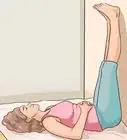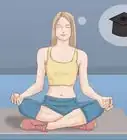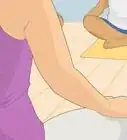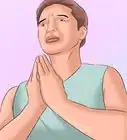X
wikiHow is a “wiki,” similar to Wikipedia, which means that many of our articles are co-written by multiple authors. To create this article, 10 people, some anonymous, worked to edit and improve it over time.
This article has been viewed 117,041 times.
Learn more...
Want to get into yoga without spending a lot of money on yoga gear? Though there are several yoga tools you can use in your practice, from yoga straps to blocks to great yoga pants, a yoga mat is probably the most affordable item you will need. You can purchase a yoga mat for under $20 at a big box store, or create your own yoga mat at home with some basic supplies and minimal skill.
Steps
Part 1
Part 1 of 2:
Sewing a Yoga Mat
-
1Gather your materials. If you’re looking for a homemade alternative to a rubber mat, use cotton fabric to create a soft, durable yoga mat. For a standard sized yoga mat, you will need:[1]
- Four yards of cotton fabric in a plain or neutral color. Choose a color you won’t mind staring at for long periods of time while holding your yoga poses.
- 11 yards of coordinating bias tape.
- Hi-lift quilt batting.
- Two yards of non slip fabric.
- Fabric glue.
- A dinner plate.
- Fabric chalk.
- Sewing pins.
- Access to a sewing machine.
-
2Cut the four yards of fabric into two pieces. Make each piece 2 yards by 1 yard. These pieces are going to form the two sides of the your yoga mat.
- You can give the mat rounded edges by folding the pieces into quarters. Use a plate to draw a curve on the edges of both pieces of fabric with a piece of fabric chalk. Then, trim the fabric along the chalk line.
Advertisement -
3Put the quilt batting between the two pieces of fabric. Batting is the white, fluffy material that is found in the middle of quilts. Look for regular batting at your local craft store, or iron on batting that has an adhesive that sticks to your fabric. Iron on batting tends to move around and shift over time, so use regular batting if possible.[2]
- Attach the batting to the two pieces of fabric using sewing pins, or follow the instructions on the package to iron on the batting if you are using iron on batting. Stagger the sewing pins about six inches apart on either side of the fabric so the batting is firmly in the middle of the two fabrics.
-
4Use the sewing machine to attach the two pieces of fabric together. If you have never quilted before, you will need to make sure your machine has the quilting walking foot attachment on it. You may need to take off the regular shank on the machine with a screwdriver to then attach the quilting walking foot.[3]
- Use the fabric chalk to draw a vertical line in the center of the top piece of fabric. You should start by sewing on the marked line to make sure the tension of the machine is correct and to get used to sewing a straight line. You should be sewing down the length of the fabric.
- You can wear quilting gloves to help you guide the quilt through the sewing machine, as it can be tricky to keep both pieces of fabric straight as you sew. You can also make your own quilting gloves using a cheap pair of knit gloves and drawing lines on the insides of the gloves with fabric paint.
-
5Continue sewing one half of the mat. Use the line drawn with fabric chalk as a marker and sew lines moving from the inside to the outside on one half of the mat.[4]
- You can then flip the mat around and sew lines down the other half of the mat, starting from the inside and moving outward.
- When you are finished, you should have evenly spaced rows of sewn lines down both sides of the fabric.
-
6Finish the edges with the bias tape. You can purchase bias tape at your local craft store. Use pins to keep the bias tape in place as you use the sewing machine to sew on it on. The bias tape will give the mat a nice finished edge.[5]
-
7Add ties to the mat. If you would like to add ties to make it easier to keep the mat rolled up as you go to and from the yoga studio, use the extra bias tape to create ties.[6]
- Cut four 18 inch pieces of bias tape. Then, fold the short edges of the tape about ¼ inch under and sew them down. Re fold the bias tape pieces and sew along the open edges.
- Use pins to attach two pieces of sewn bias tape 6 inches in from each end of the mat. Place one piece on each side of the mat and sew them into place.
-
8Put the non slip fabric on the mat. If you are planning to use the mat on a surface other than carpet, you will need to attach non-slip fabric to the bottom side of the mat to ensure it does not slip or shift under you during yoga class.[7]
- You can cut the non slip fabric into shapes, like diamonds or circles, and use the fabric glue to attach them to the bottom side of the mat. You can also put two diamonds or circles on either end of the top side of the mat so your hands and feet are secure when you practice yoga.
- Another option is to cut the non slip fabric so it covers both sides of the mat fully and attach both pieces with fabric glue so you have a full non slip surface that you can move around on during yoga class.
Advertisement
Part 2
Part 2 of 2:
Using Other Materials
-
1Try a Twister mat. If you have an edition of Twister lying around that you no longer use, repurpose the colorful Twister mat by using it as your yoga mat. The Twister mat is made of materials that will stay in place as you move, shift, and twist during your yoga class.[8]
- You can also use the colorful circles on the mat as markers for your hands and feet as you practice yoga.
-
2Practice on a clean area rug. Look for a long, narrow area rug at your local home decor store and use it as a yoga mat. Check that the area rug has a non slip surface on the bottom so it will stay in place as you move around.[9]
- Try to buy an area rug that is machine washable, or easy to clean, and made of short, durable fibers. You will likely sweat during your yoga class and you want to be able to wash the rug after you use it.
-
3Use non slip shoes and rubber gloves. If you do not have access to an area rug or another mat, you can substitute a mat with a pair of non slip shoes and a pair of rubber gloves. Put the shoes on your feet and the gloves on your hands. You can then feel secure on any surface, from carpet to wood to tile, as you do your yoga moves.[10]
- Avoid practicing barefoot and bare handed on a towel or a blanket, as these materials are no slip proof and can shift or move around as you do yoga.
Advertisement
How Can I Set Up A Space In My House For Yoga?
Things You'll Need
Sewing a Yoga Mat
-
- Four yards of cotton fabric in a plain or neutral color. Choose a color you won’t mind staring at for long periods of time while holding your yoga poses.
- 11 yards of coordinating bias tape.
- Hi-lift quilt batting.
- Two yards of non slip fabric.
- Fabric glue.
- A plate.
- Fabric chalk.
- Sewing pins.
- Access to a sewing machine.
Using Other Materials
- A Twister mat.
- A clean area rug.
- Non slip shoes and rubber gloves.
References
- ↑ http://www.mesewcrazy.com/2015/05/yoga-mat-diy.html
- ↑ http://www.mesewcrazy.com/2015/05/yoga-mat-diy.html
- ↑ http://www.mesewcrazy.com/2015/05/yoga-mat-diy.html
- ↑ http://www.mesewcrazy.com/2015/05/yoga-mat-diy.html
- ↑ http://www.mesewcrazy.com/2015/05/yoga-mat-diy.html
- ↑ http://www.mesewcrazy.com/2015/05/yoga-mat-diy.html
- ↑ http://www.mesewcrazy.com/2015/05/yoga-mat-diy.html
- ↑ https://www.youtube.com/watch?v=lBH7mneHJmc
- ↑ https://www.youtube.com/watch?v=lBH7mneHJmc
About This Article
Advertisement
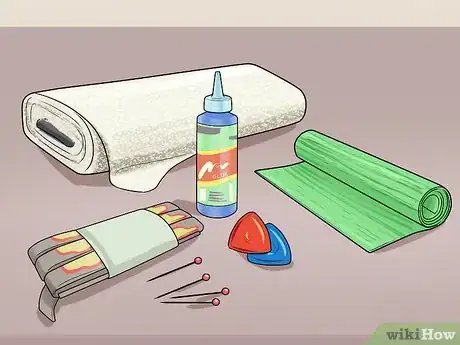
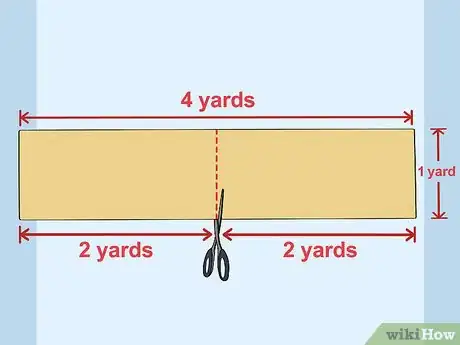
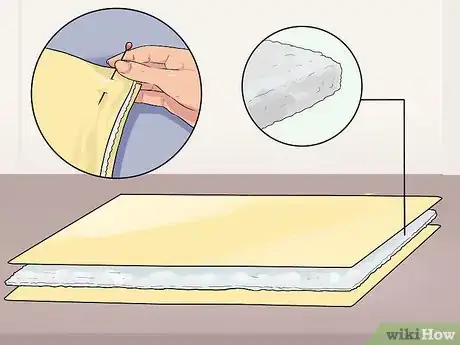


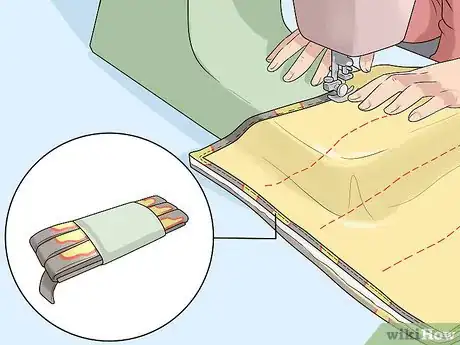

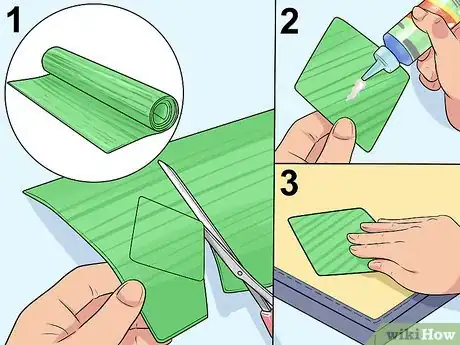
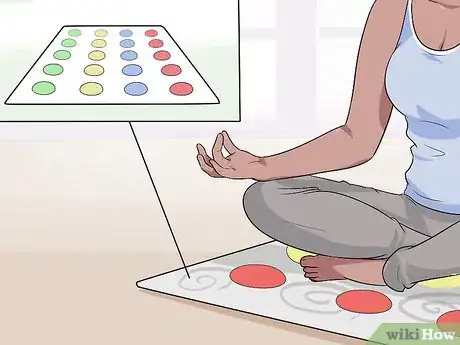
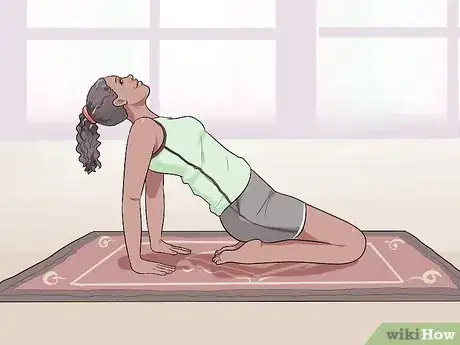
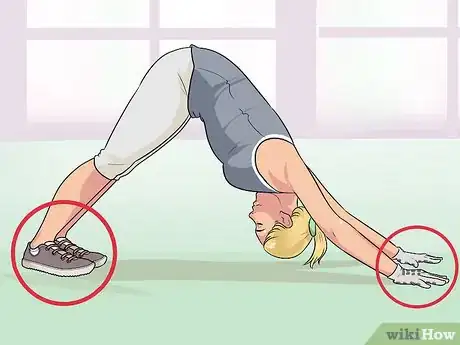
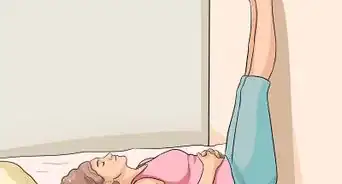
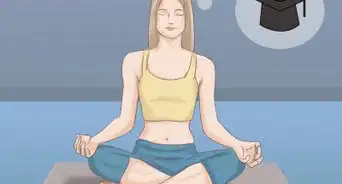

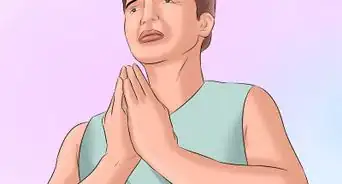
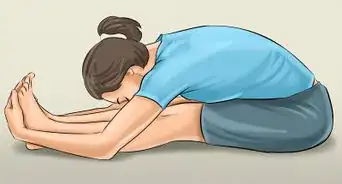
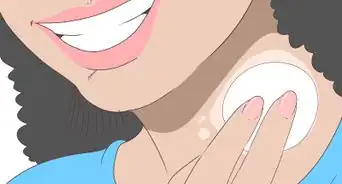

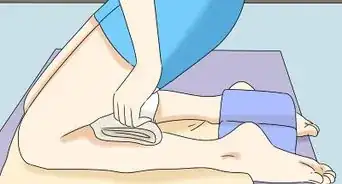
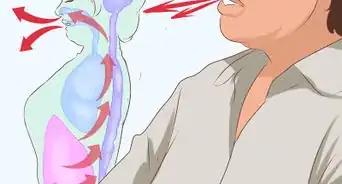

-Step-16.webp)








